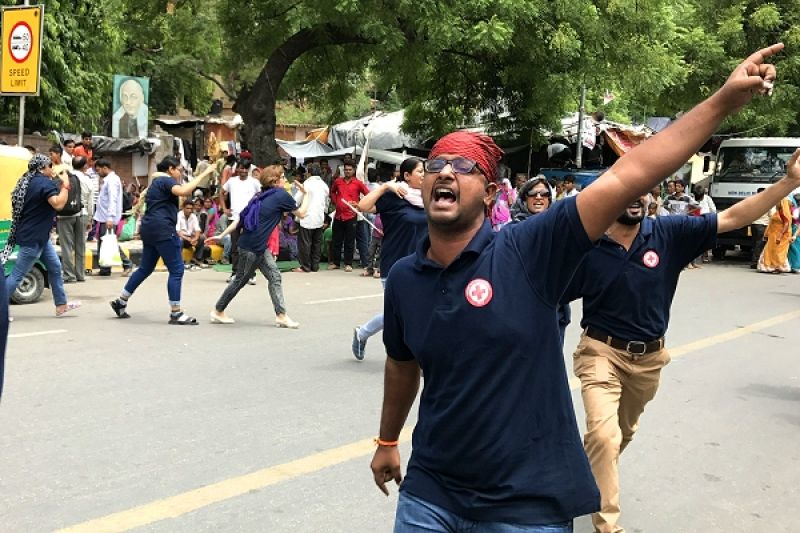Reaching the last mile – Early Action Messaging through the WhatNow Service
At the Information Systems for Crisis Response and Management ( or “ISCRAM”) Asia Pacific Conference last week, disaster industry professionals, researchers and policymakers discussed developments in the use of information systems in emergency management. Centered around this year’s theme of “Innovating for Resilience,” topics ranged from the use of human-centered design in emergency management to social media behavior during the 2017 Iran-Iraq earthquake.
In a workshop titled “Reaching the Last Mile – Early Action Messaging Through the WhatNow Service and Hazard Apps,” representatives from the Red Cross and Wellington Region Emergency Management Office (or “WREMO”) discussed new progress in Early Warning Early Action (“EWEA”) systems and the crucial role EWEA systems play in any disaster management and community resilience approach. A key point of discussion was the development and rollout of the WhatNow Service, a new system designed to increase the speed and dissemination of disaster preparedness messaging.
As explained by Jessica Ports Robbins of the American Red Cross and Global Disaster Preparedness Center, the WhatNow Service bridges the gap between monitoring and communication in an early warning by automatically disseminating a pre-loaded, actionable preparedness and risk reduction message as soon as an official alert is issued. Developed by the Red Cross and Red Crescent’s Global Disaster Preparedness Center in partnership with Google, the system uses an open API to allow partners to access that pre-loaded message and broadcast or disseminate it. The message can then reach users through apps, websites, and national and local media channels, alongside hazard alerts already disseminated on those platforms.
The pre-loaded WhatNow Messages, which are based on the IFRC’s Public Awareness and Public Education (PAPE) key messages for disaster risk reduction, cover 20+ hazards and six urgency levels and are designed to provide clear and actionable steps to reduce risk and prepare for a disaster. Each National Society contextualizes these messages to their local risks, language, and specific needs before uploading them to the global WhatNow Message Portal, where they can be accessed by partners through the open API.
Panelists also stressed the importance of just-in-time messaging and delivery of messages through multiple channels to increase disaster preparedness, and the need for strong partnerships to facilitate such efforts. As Omar Abou-Samra of the Global Disaster Preparedness Center discussed further, a key benefit of the WhatNow System is its ability to streamline delivery of messages through multiple channels while ensuring consistency and harmony between local and national messaging.
According to Ports Robbins, as of November 9, 12 National Societies have publish messages to the WhatNow Portal, and she estimates dozens more are in the process of drafting the messages they want to use. Of the workshop at ISCRAM, she further stated “We got really great feedback from the audience. . . They’re very excited about this idea of WhatNow being able to make that bridge from Early Warning to Early Action.”
The conference, which ran from November 5-7 in Wellington, New Zealand, was the first ISCRAM conference targeted explicitly to the Asia Pacific region.
Lessons Learned :
Supporting Materials :



